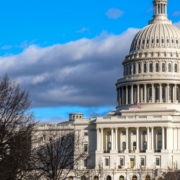Three Takeaways From Fed Chair Powell Following July Hike Decision
Roughly every six weeks Federal Reserve Chair Jerome Powell delivers a report card that rates the economy’s future performance. This comes along with each decision the central bank makes on interest rates.
The latest move — to raise interest rates by a quarter point — came on Wednesday. That followed the Fed’s decision to hold rates steady at its June meeting for the first time since it began its rate-hiking campaign to tame inflation in March 2022.
Wednesday’s report card likely won’t sway the economic outlook’s “grade point average” for the whole year. That is to say, it wasn’t vastly different from the prior report cards Powell delivered after the other meetings this year. But there were some notable takeaways.
A recession isn’t in the cards for now
Powell still believes the Fed can achieve what’s known as a “soft landing.” He said on Wednesday, “given the resilience of the economy recently [Fed staffers] are no longer forecasting a recession.”
That would mean that the central bank could get inflation down to its 2% target causing minimal damage to the economy. That’s generally been difficult because the higher interest rates go, the higher the unemployment rate goes, which increases the likelihood of a recession.
That’s why many economists, including some at the Fed, were predicting we’d be in a recession around this time last year. Powell doesn’t agree, however – although he said Fed staff are predicting “a noticeable slowdown in growth starting later this year.” Click HERE to read more.
Financial Planning and Advisory Services are offered through Prosperity Capital Advisors (“PCA”), an SEC registered investment adviser. Registration as an investment adviser does not imply a certain level of skill or training. Franklin Planning and PCA are separate, non- affiliated entities. PCA does not provide tax or legal advice.





